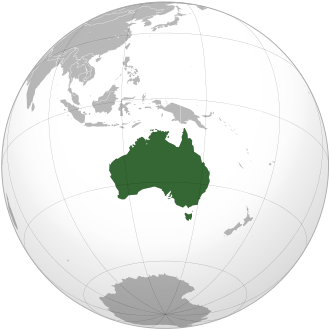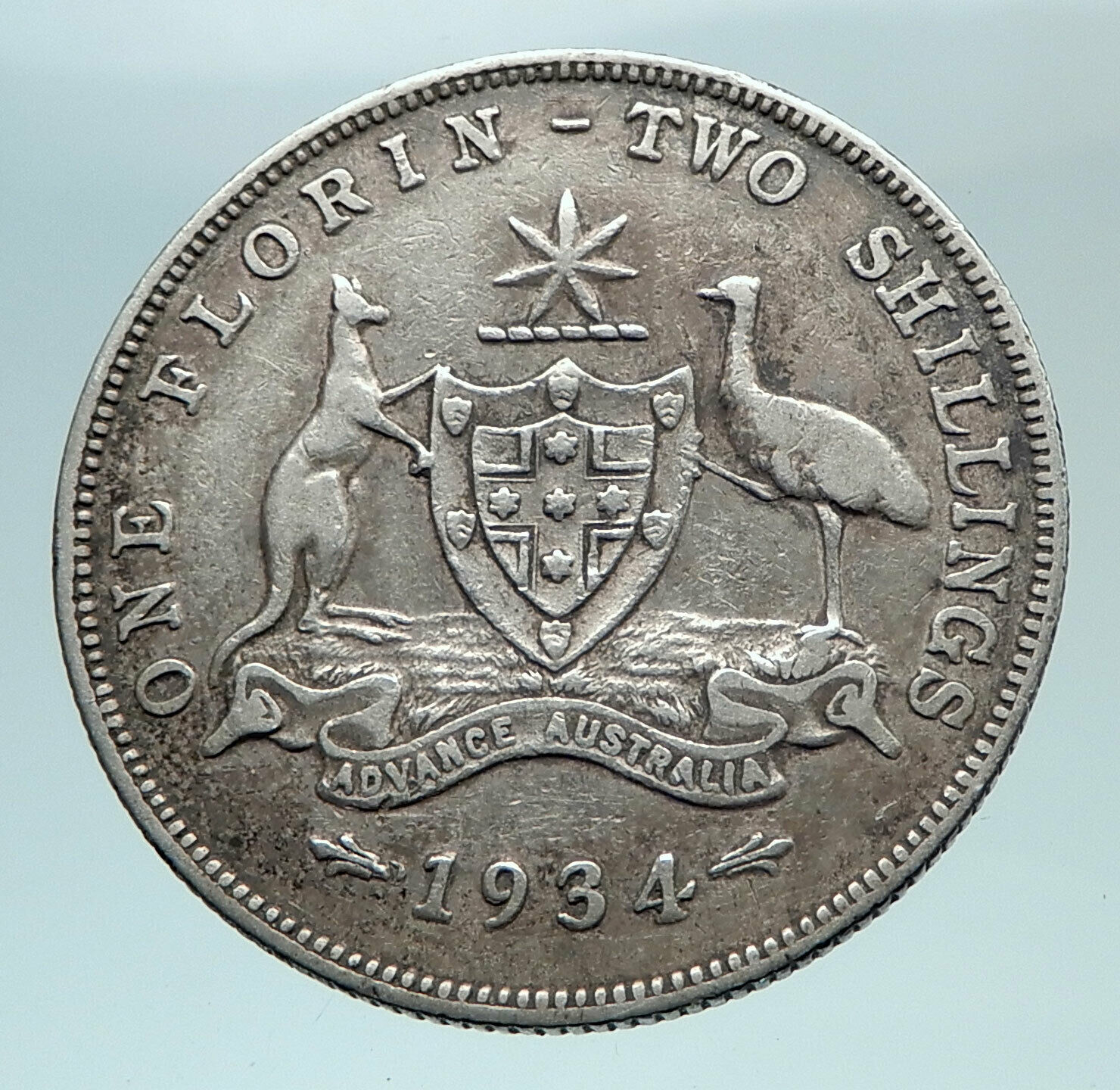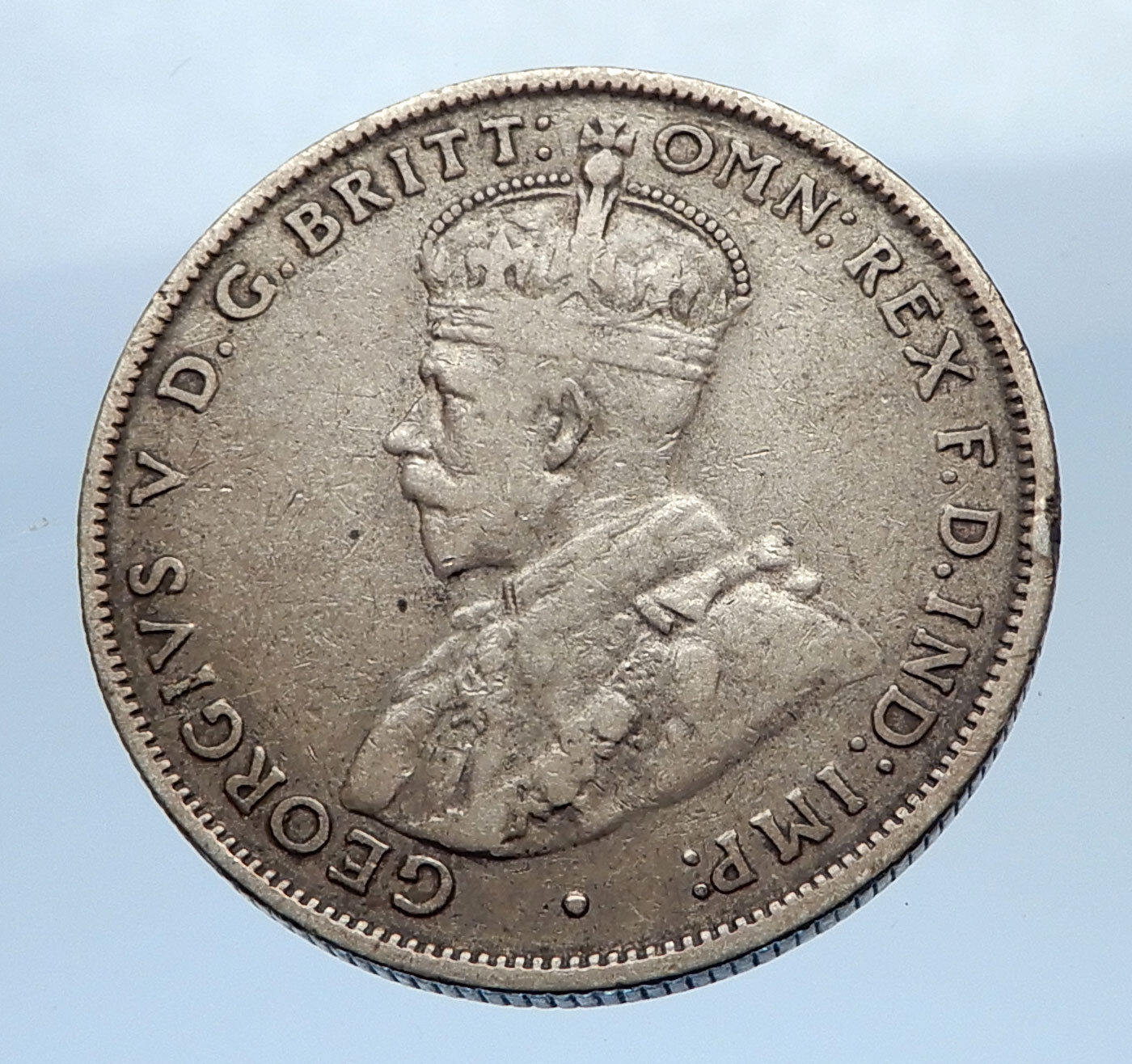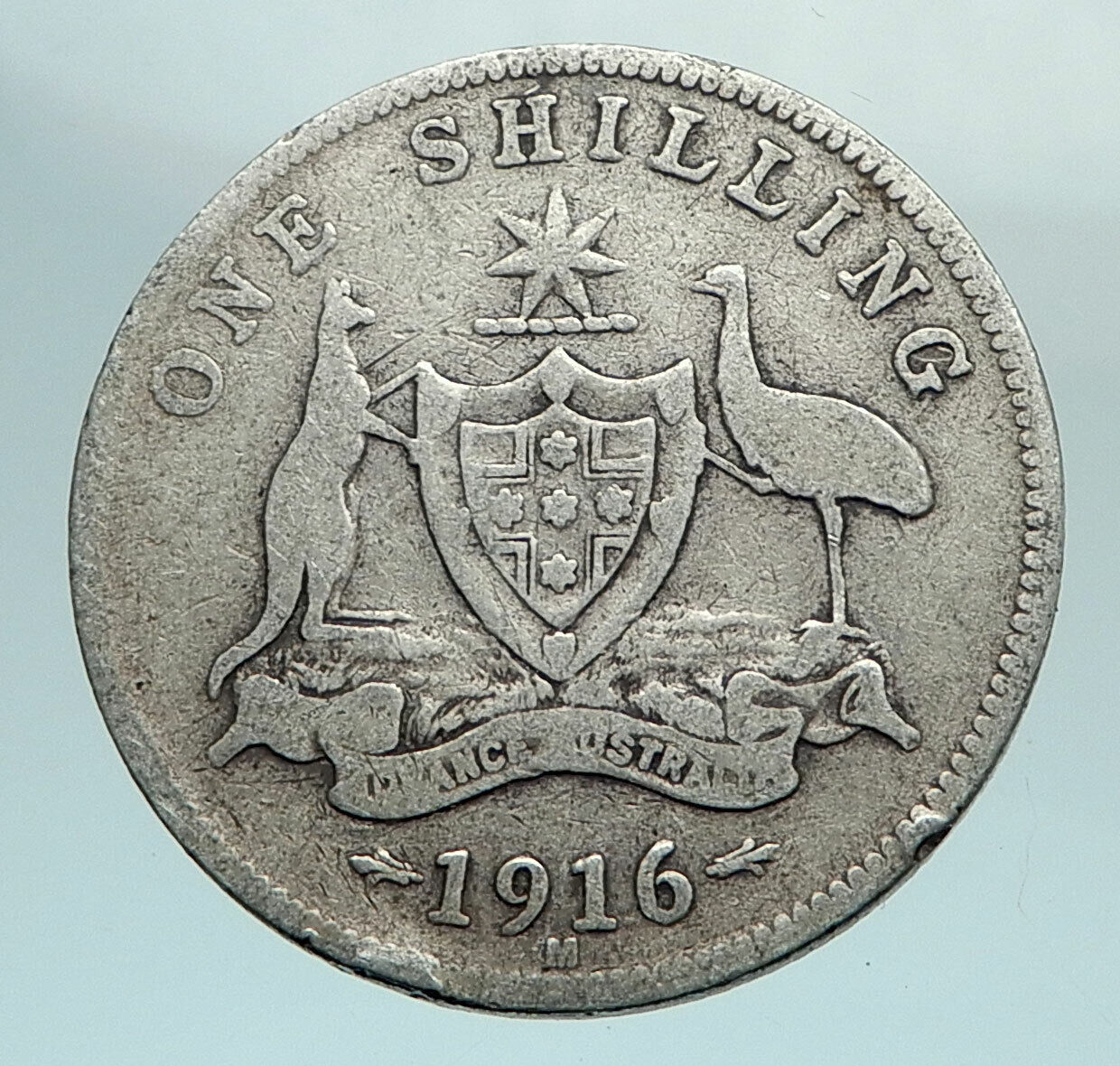|
Australia under Elizabeth II – Queen: 6 February 1952–present
Australian States Series – Queensland
1989 Proof Silver 10 Dollars 33 mm (20.09 grams) 0.925 Silver (0.5948 oz. ASW)
Reference: KM# 114
ELIZABETH II AUSTRALIA 1989 RDM, Queen Elizabeth II facing right.
QUEENSLAND AUDAX·AT·FIDELIS 10 DOLLARS, Coat of Arms of Queensland: A Red Deer & Brolga, supporting a shield which features the heads of a Bull and a Ram, a Sheaffe of Wheat and Gold rising from a pile of Quartz. Two stalks of Sugarcane surround the State Badge, a Maltese Cross with a centred Crown of St. Edward.
You are bidding on the exact item pictured, provided with a Certificate of Authenticity and Lifetime Guarantee of Authenticity.
 Queensland is a state of Australia. It is the second-largest and third-most populous Australian state. It is a federated state and a parliamentary constitutional monarchy. Situated in the north-east of the country, it is bordered by the Northern Territory, South Australia and New South Wales to the west, south-west and south respectively. To the east, Queensland is bordered by the Coral Sea and Pacific Ocean. To its north is the Torres Strait, separating the Australian mainland from Papua New Guinea. With an area of 1,852,642 square kilometres (715,309 sq mi), Queensland is the world’s sixth-largest sub-national entity, and is larger than all but 15 countries. Due to its size, Queensland’s geographical features and climates are diverse, including tropical rainforests, rivers, coral reefs, mountain ranges and sandy beaches in its tropical and sub-tropical coastal regions, as well as deserts and savanna in the semi-arid and desert climactic regions of its interior. Queensland is a state of Australia. It is the second-largest and third-most populous Australian state. It is a federated state and a parliamentary constitutional monarchy. Situated in the north-east of the country, it is bordered by the Northern Territory, South Australia and New South Wales to the west, south-west and south respectively. To the east, Queensland is bordered by the Coral Sea and Pacific Ocean. To its north is the Torres Strait, separating the Australian mainland from Papua New Guinea. With an area of 1,852,642 square kilometres (715,309 sq mi), Queensland is the world’s sixth-largest sub-national entity, and is larger than all but 15 countries. Due to its size, Queensland’s geographical features and climates are diverse, including tropical rainforests, rivers, coral reefs, mountain ranges and sandy beaches in its tropical and sub-tropical coastal regions, as well as deserts and savanna in the semi-arid and desert climactic regions of its interior.
 The history of Queensland spans thousands of years, encompassing both a lengthy indigenous presence, as well as the eventful times of post-European settlement. The north-eastern Australian region was explored by Dutch, Spanish and French navigators before being encountered by Lieutenant James Cook in 1770. The state has witnessed frontier warfare between European settlers and Indigenous inhabitants (which did not result in any settlement or treaty), as well as the exploitation of cheap Kanaka labour sourced from the South Pacific through a form of forced recruitment known at the time as “blackbirding”. The Australian Labor Party has its origin as a formal organisation in Queensland and the town of Barcaldine is the symbolic birthplace of the party. A rare record of early settler life in north Queensland can be seen in a set of ten photographic glass plates taken in the 1860s by Richard Daintree, in the collection of the National Museum of Australia. The history of Queensland spans thousands of years, encompassing both a lengthy indigenous presence, as well as the eventful times of post-European settlement. The north-eastern Australian region was explored by Dutch, Spanish and French navigators before being encountered by Lieutenant James Cook in 1770. The state has witnessed frontier warfare between European settlers and Indigenous inhabitants (which did not result in any settlement or treaty), as well as the exploitation of cheap Kanaka labour sourced from the South Pacific through a form of forced recruitment known at the time as “blackbirding”. The Australian Labor Party has its origin as a formal organisation in Queensland and the town of Barcaldine is the symbolic birthplace of the party. A rare record of early settler life in north Queensland can be seen in a set of ten photographic glass plates taken in the 1860s by Richard Daintree, in the collection of the National Museum of Australia.
Indigenous history
The Aboriginal occupation of Queensland is thought to predate 50,000 BC, likely via boat or land bridge across Torres Strait, and became divided into over 90 different language groups.
During the last ice age Queensland’s landscape became more arid and largely desolate, making food and other supplies scarce. This led to the world’s first seed-grinding technology. Warming again made the land hospitable, which brought high rainfall along the eastern coast, stimulating the growth of the state’s tropical rainforests.
European colonization
In February 1606, Dutch navigator Willem Janszoon landed near the site of what is now Weipa, on the western shore of Cape York. This was the first recorded landing of a European in Australia, and it also marked the first reported contact between European and Aboriginal Australian people.[13] The region was also explored by French and Spanish explorers (commanded by Louis Antoine de Bougainville and Luís Vaez de Torres, respectively) prior to the arrival of Lieutenant James Cook in 1770. Cook claimed the east coast under instruction from King George III of the Kingdom of Great Britain on 22 August 1770 at Possession Island, naming Eastern Australia, including Queensland, ‘New South Wales’.
The Aboriginal population declined significantly after a smallpox epidemic during the late 18th century. There has been controversy regarding the origins of smallpox in Australia; while many sources have claimed that it originated with European colonisation, this theory has been contradicted by scientific evidence. There is circumstantial evidence that Macassan mariners visiting Arnhem Land introduced smallpox to Australia.)
In 1823, John Oxley, a British explorer, sailed north from what is now Sydney to scout possible penal colony sites in Gladstone (then Port Curtis) and Moreton Bay. At Moreton Bay, he found the Brisbane River. He returned in 1824 and established a penal settlement at what is now Redcliffe. The settlement, initially known as Edenglassie, was then transferred to the current location of the Brisbane city centre. Edmund Lockyer discovered outcrops of coal along the banks of the upper Brisbane River in 1825. In 1839 transportation of convicts was ceased, culminating in the closure of the Brisbane penal settlement. In 1842 free settlement, which had already commenced, was officially permitted. In 1847, the Port of Maryborough was opened as a wool port. While most early immigrants came from New South Wales, the first free immigrant ship to arrive in Moreton Bay from Europe was the Artemisia, in 1848. In 1857, Queensland’s first lighthouse was built at Cape Moreton.
 Elizabeth II (Elizabeth Alexandra Mary; born 21 April 1926) is, and has been since her accession in 1952, Queen of the United Kingdom, Canada, Australia, and New Zealand, and Head of the Commonwealth . She is also Queen of 12 countries that have become independent since her accession: Jamaica, Barbados, the Bahamas, Grenada, Papua New Guinea, Solomon Islands, Tuvalu, Saint Lucia, Saint Vincent and the Grenadines, Belize, Antigua and Barbuda, and Saint Kitts and Nevis.[bb] Elizabeth II (Elizabeth Alexandra Mary; born 21 April 1926) is, and has been since her accession in 1952, Queen of the United Kingdom, Canada, Australia, and New Zealand, and Head of the Commonwealth . She is also Queen of 12 countries that have become independent since her accession: Jamaica, Barbados, the Bahamas, Grenada, Papua New Guinea, Solomon Islands, Tuvalu, Saint Lucia, Saint Vincent and the Grenadines, Belize, Antigua and Barbuda, and Saint Kitts and Nevis.[bb]
Elizabeth was born in London to the Duke and Duchess of York, later King George VI and Queen Elizabeth , and was the elder of their two daughters. She was educated privately at home. Her father acceded to the throne on the abdication of his brother Edward VIII in 1936, from which time she was the heir presumptive . She began to undertake public duties during World War II , serving in the Auxiliary Territorial Service . In 1947, she married Prince Philip, Duke of Edinburgh , with whom she has four children: Charles , Anne , Andrew , and Edward .
<pelizabeth's many="" historic="" visits="" and="" meetings="" include="" a="" state="" visit="" to="" the="" republic="" of="" ireland="" reciprocal="" from="" pope.="" she="" has="" seen="" major="" constitutional="" changes,="" such="" as="" devolution="" in="" united="" kingdom,="" canadian="" patriation="" ,="" decolonisation="" africa="" .="" also="" reigned="" through="" various="" wars="" conflicts="" involving="" her="" realms="" is="" world's="" oldest="" reigning="" monarch="" well="" britain's="" longest-lived="" 2015,="" surpassed="" reign="" great-great-grandmother,="" queen="" victoria="" become="" longest-reigning="" british="" regnant="" world="" history.
Times of personal significance have included the births and marriages of her children, grandchildren and great grandchildren, her coronation in 1953 , and the celebration of milestones such as her Silver , Golden and Diamond Jubilees in 1977, 2002, and 2012, respectively. Moments of sadness for her include the death of her father, aged 56; the assassination of Prince Philip’s uncle, Lord Mountbatten ; the breakdown of her children’s marriages in 1992 (her annus horribilis ); the death in 1997 of her son’s former wife, Diana, Princess of Wales ; and the deaths of her mother and sister in 2002. Elizabeth has occasionally faced republican sentiments and severe press criticism of the royal family , but support for the monarchy and her personal popularity remain high.
  Australia, officially the Commonwealth of Australia, is a country comprising the mainland of the Australian continent , the island of Tasmania , and numerous smaller islands . It is the world’s sixth-largest country by total area . Neighbouring countries include Indonesia , East Timor and Papua New Guinea to the north; the Solomon Islands and Vanuatu to the north-east; and New Zealand to the south-east. Australia, officially the Commonwealth of Australia, is a country comprising the mainland of the Australian continent , the island of Tasmania , and numerous smaller islands . It is the world’s sixth-largest country by total area . Neighbouring countries include Indonesia , East Timor and Papua New Guinea to the north; the Solomon Islands and Vanuatu to the north-east; and New Zealand to the south-east.
 For at least 40,000 years before the first British settlement in the late 18th century, Australia was inhabited by indigenous Australians , who spoke languages grouped into roughly 250 language groups . After the European discovery of the continent by Dutch explorers in 1606, Australia’s eastern half was claimed by Great Britain in 1770 and initially settled through penal transportation to the colony of New South Wales from 26 January 1788. The population grew steadily in subsequent decades; the continent was explored and an additional five self-governing crown colonies were established.. For at least 40,000 years before the first British settlement in the late 18th century, Australia was inhabited by indigenous Australians , who spoke languages grouped into roughly 250 language groups . After the European discovery of the continent by Dutch explorers in 1606, Australia’s eastern half was claimed by Great Britain in 1770 and initially settled through penal transportation to the colony of New South Wales from 26 January 1788. The population grew steadily in subsequent decades; the continent was explored and an additional five self-governing crown colonies were established..
On 1 January 1901, the six colonies federated , forming the Commonwealth of Australia. Since Federation, Australia has maintained a stable liberal democratic political system that functions as a federal parliamentary democracy and constitutional monarchy comprising six states and several territories . The population of 23.6 million[5] is highly urbanised and heavily concentrated in the eastern states and on the coast.
Australia is a developed country and one of the wealthiest in the world, with the world’s 12th-largest economy . In 2012 Australia had the world’s fifth-highest per capita income . Australia’s military expenditure is the world’s 13th-largest . With the second-highest human development index globally , Australia ranks highly in many international comparisons of national performance, such as quality of life, health, education, economic freedom , and the protection of civil liberties and political rights. Australia is a member of the United Nations , G20 , Commonwealth of Nations , ANZUS , Organisation for Economic Co-operation and Development (OECD), World Trade Organization , Asia-Pacific Economic Cooperation , and the Pacific Islands Forum.
|




 Queensland is a state of Australia. It is the second-largest and third-most populous Australian state. It is a federated state and a parliamentary constitutional monarchy. Situated in the north-east of the country, it is bordered by the Northern Territory, South Australia and New South Wales to the west, south-west and south respectively. To the east, Queensland is bordered by the Coral Sea and Pacific Ocean. To its north is the Torres Strait, separating the Australian mainland from Papua New Guinea. With an area of 1,852,642 square kilometres (715,309 sq mi), Queensland is the world’s sixth-largest sub-national entity, and is larger than all but 15 countries. Due to its size, Queensland’s geographical features and climates are diverse, including tropical rainforests, rivers, coral reefs, mountain ranges and sandy beaches in its tropical and sub-tropical coastal regions, as well as deserts and savanna in the semi-arid and desert climactic regions of its interior.
Queensland is a state of Australia. It is the second-largest and third-most populous Australian state. It is a federated state and a parliamentary constitutional monarchy. Situated in the north-east of the country, it is bordered by the Northern Territory, South Australia and New South Wales to the west, south-west and south respectively. To the east, Queensland is bordered by the Coral Sea and Pacific Ocean. To its north is the Torres Strait, separating the Australian mainland from Papua New Guinea. With an area of 1,852,642 square kilometres (715,309 sq mi), Queensland is the world’s sixth-largest sub-national entity, and is larger than all but 15 countries. Due to its size, Queensland’s geographical features and climates are diverse, including tropical rainforests, rivers, coral reefs, mountain ranges and sandy beaches in its tropical and sub-tropical coastal regions, as well as deserts and savanna in the semi-arid and desert climactic regions of its interior.  The history of Queensland spans thousands of years, encompassing both a lengthy indigenous presence, as well as the eventful times of post-European settlement. The north-eastern Australian region was explored by Dutch, Spanish and French navigators before being encountered by Lieutenant James Cook in 1770. The state has witnessed frontier warfare between European settlers and Indigenous inhabitants (which did not result in any settlement or treaty), as well as the exploitation of cheap Kanaka labour sourced from the South Pacific through a form of forced recruitment known at the time as “blackbirding”. The Australian Labor Party has its origin as a formal organisation in Queensland and the town of Barcaldine is the symbolic birthplace of the party. A rare record of early settler life in north Queensland can be seen in a set of ten photographic glass plates taken in the 1860s by Richard Daintree, in the collection of the National Museum of Australia.
The history of Queensland spans thousands of years, encompassing both a lengthy indigenous presence, as well as the eventful times of post-European settlement. The north-eastern Australian region was explored by Dutch, Spanish and French navigators before being encountered by Lieutenant James Cook in 1770. The state has witnessed frontier warfare between European settlers and Indigenous inhabitants (which did not result in any settlement or treaty), as well as the exploitation of cheap Kanaka labour sourced from the South Pacific through a form of forced recruitment known at the time as “blackbirding”. The Australian Labor Party has its origin as a formal organisation in Queensland and the town of Barcaldine is the symbolic birthplace of the party. A rare record of early settler life in north Queensland can be seen in a set of ten photographic glass plates taken in the 1860s by Richard Daintree, in the collection of the National Museum of Australia.  Elizabeth II (Elizabeth Alexandra Mary; born 21 April 1926) is, and has been since her accession in 1952, Queen of the United Kingdom, Canada, Australia, and New Zealand, and Head of the Commonwealth . She is also Queen of 12 countries that have become independent since her accession: Jamaica, Barbados, the Bahamas, Grenada, Papua New Guinea, Solomon Islands, Tuvalu, Saint Lucia, Saint Vincent and the Grenadines, Belize, Antigua and Barbuda, and Saint Kitts and Nevis.[bb]
Elizabeth II (Elizabeth Alexandra Mary; born 21 April 1926) is, and has been since her accession in 1952, Queen of the United Kingdom, Canada, Australia, and New Zealand, and Head of the Commonwealth . She is also Queen of 12 countries that have become independent since her accession: Jamaica, Barbados, the Bahamas, Grenada, Papua New Guinea, Solomon Islands, Tuvalu, Saint Lucia, Saint Vincent and the Grenadines, Belize, Antigua and Barbuda, and Saint Kitts and Nevis.[bb]
 Australia, officially the Commonwealth of Australia, is a country comprising the mainland of the Australian continent , the island of Tasmania , and numerous smaller islands . It is the world’s sixth-largest country by total area . Neighbouring countries include Indonesia , East Timor and Papua New Guinea to the north; the Solomon Islands and Vanuatu to the north-east; and New Zealand to the south-east.
Australia, officially the Commonwealth of Australia, is a country comprising the mainland of the Australian continent , the island of Tasmania , and numerous smaller islands . It is the world’s sixth-largest country by total area . Neighbouring countries include Indonesia , East Timor and Papua New Guinea to the north; the Solomon Islands and Vanuatu to the north-east; and New Zealand to the south-east. For at least 40,000 years before the first British settlement in the late 18th century, Australia was inhabited by indigenous Australians , who spoke languages grouped into roughly 250 language groups . After the European discovery of the continent by Dutch explorers in 1606, Australia’s eastern half was claimed by Great Britain in 1770 and initially settled through penal transportation to the colony of New South Wales from 26 January 1788. The population grew steadily in subsequent decades; the continent was explored and an additional five self-governing crown colonies were established..
For at least 40,000 years before the first British settlement in the late 18th century, Australia was inhabited by indigenous Australians , who spoke languages grouped into roughly 250 language groups . After the European discovery of the continent by Dutch explorers in 1606, Australia’s eastern half was claimed by Great Britain in 1770 and initially settled through penal transportation to the colony of New South Wales from 26 January 1788. The population grew steadily in subsequent decades; the continent was explored and an additional five self-governing crown colonies were established..




